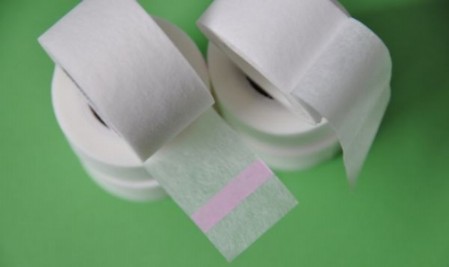Source: Link Testing Instruments Co.,ltd

The medical infusion patch is an indispensable medical product in the infusion process. It is mainly used to fix the infusion catheter and needle handle during the infusion process, and has a certain protective effect on the puncture site of the infusion. The medical infusion patch is mainly composed of three parts: medical tape, absorbent pad, and isolation film. The medical tape plays a fixed role. It is made of medical non-woven fabric or medical polyvinyl chloride (PVC), polyethylene (PE) coated with medical adhesive on the surface. ) Or medical polyurethane film (PU) and other materials, the adhesiveness of this part directly affects whether the infusion patch can fully exert its fixation and protection effect. If the adhesiveness of the infusion patch is small, the infusion patch will easily fall off during the infusion process and lose its fixing effect; if the adhesiveness of the infusion patch is too large, the infusion patch will not be easy to tear off after the infusion is completed. During the process, the patient feels intense pain and damages the patient's skin. Therefore, the medical infusion bag should have suitable adhesiveness. There are two main detection indicators for the adhesiveness of infusion stickers, namely, retention and peel strength. This article mainly uses the test peel strength to characterize its adhesive performance.
Test method and instrument
The peel strength test of the medical infusion patch can be based on the relevant provisions of the medical industry standard YY/T 0148-2006 "General Requirements for Medical Tapes" on the peel strength test.
The test equipment used this time is the LTS-05 medical packaging performance tester independently developed and produced by Link Testing Instruments Co.,Ltd for medical packaging testing.
Test principle: This test is to obtain the peel strength of the sample by testing the force value change during the peeling process of the transfusion paste from the test board. The fixtures of the equipment are divided into upper and lower fixtures. The upper fixture is a movable fixture, which can move upward according to the set separation speed of the fixture. During the test, the infusion sticker and the test board are respectively clamped in the two fixtures and move with the upper fixture Achieve peeling; the upper clamp is equipped with a force sensor, and the device is equipped with a displacement sensor. During the peeling process of the sample, the force sensor and the displacement sensor can monitor the force value and displacement changes in real time, so as to calculate the peeling of the sample strength.
Experimental procedure:
(1) Place the sample to be tested in a laboratory environment at 20℃ and 65%RH for 24 hours.
(2) Cut 5 specimens with a length of 400 mm and a width of 25 mm from the surface of the sample.
(3) Tear off the release paper, stick the sample on the center of the stainless steel plate (test plate), make the two sides of the sample parallel to the two long sides of the steel plate, and roll it 4 times along the length of the sample with a pressing roller And leave it for 10 minutes.
(4) Clamp the free ends of the sample and the test plate in the upper and lower clamps of the equipment, so that the long axis of the sample is parallel to the center lines of the upper and lower clamps.
(5) Set the sample name, sample width, test speed (300 mm/min) and other parameter information, click the test option, and the test will start.
(6) During the test, the system displays the force value in the peeling process of the sample in real time, and automatically displays the test result after the test.
(7) Repeat the operations (3) ~ (6) until all 5 samples have been tested, and the test result is the average of the test results of the 5 samples.
Test results and analysis
The average value of the peel strength of the infusion patch samples tested this time is 0.1541 kN/m, which is 1.541 N/cm.
For more details please visit www.linktesting.org